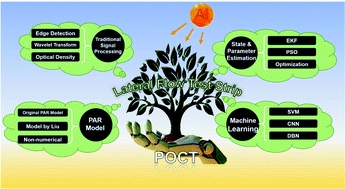Algorithms for immunochromatographic assay: review and impact on future application
Abstract
Lateral flow immunoassay (LFIA) is a critical choice for applications of point-of-care testing (POCT) in clinical and laboratory environments because of its excellent features and versatility. To obtain authentic values of analyte concentrations and reliable detection results, the relevant research has featured the application of a diversity of methods of mathematical analysis to technical analysis to allow for use with a small quantity of data. Accordingly, a number of signal and image processing strategies have also emerged for the application of gold immunochromatographic and fluorescent strips to improve sensitivity and overcome the limitations of correlative hardware systems. Instead of traditional methods to solve the problem, researchers nowadays are interested in machine learning and its more powerful variant, deep learning technology, for LFIA detection. This review emphasizes different models for the POCT of accurate labels as well as signal processing strategies that use artificial intelligence and machine learning. We focus on the analytical mechanism, procedural flow, and the results of the assay, and conclude by summarizing the advantages and limitations of each algorithm. We also discuss the potential for application of and directions of future research on LFIA technology when combined with Artificial Intelligence and deep learning.



 Please wait while we load your content...
Please wait while we load your content...